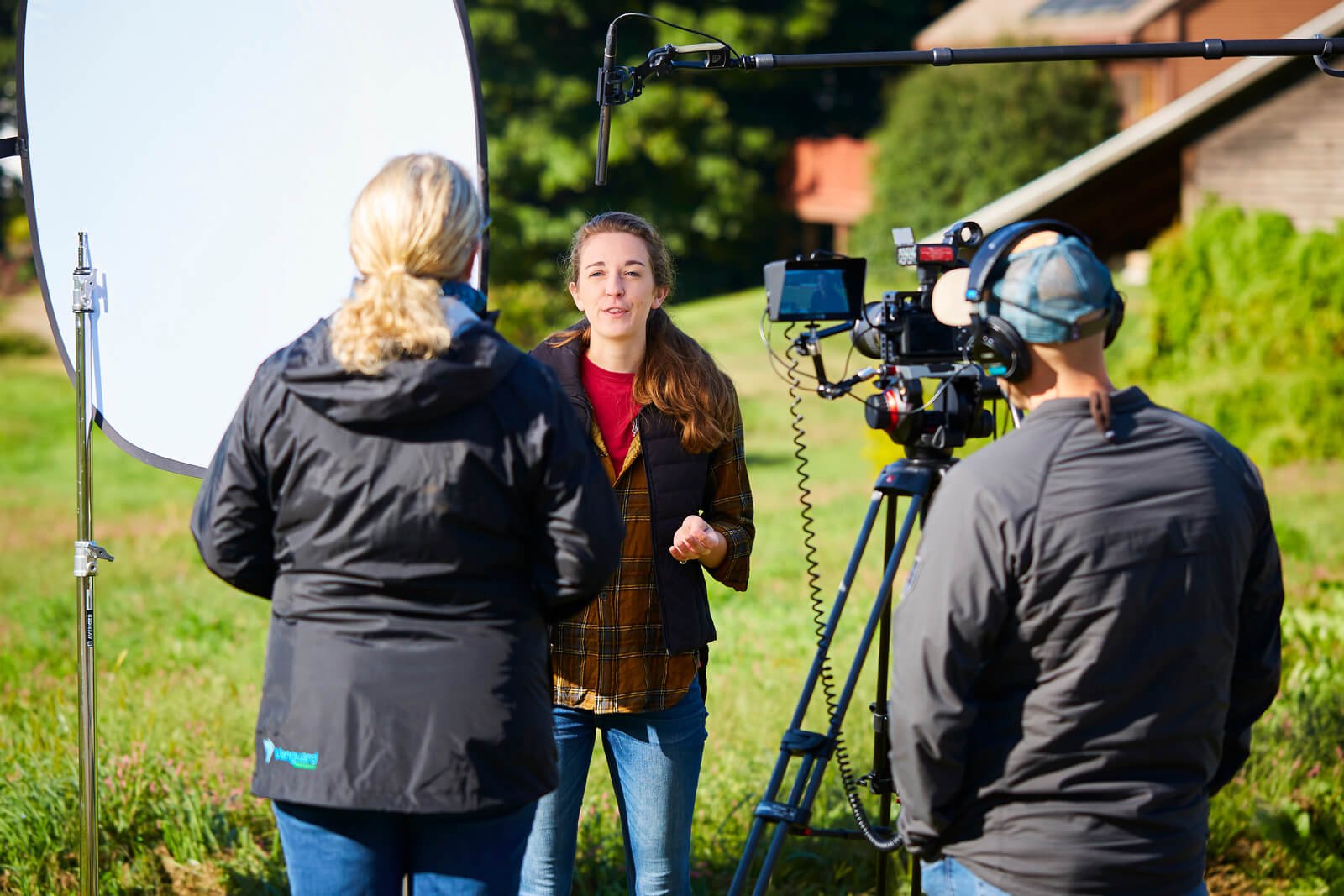
Brand & Corporate Photography
Brand photography refers to the specific genre of photography that focuses on capturing images to represent and promote a brand. It involves creating visuals that embody the essence, values, and identity of a particular brand, product, or service. Brand photography aims to convey the story, personality, and unique qualities of the brand through images.
This type of photography typically includes various elements:
Visual Identity: Brand photography encompasses images that reflect the brand's visual identity, including its logo, color scheme, typography, and overall aesthetics.
Product Photography: Highlighting products through high-quality images, showcasing their features, design, and functionality in a visually appealing manner.
Lifestyle Photography: Showing the brand in real-life scenarios or settings, creating a connection between the brand and its target audience by illustrating how the products or services fit into their lives.
Corporate Photography: Capturing images related to the company's culture, employees, workspace, and events, which can help in portraying the brand's values and work environment.
The main goal of brand photography is to build recognition and establish an emotional connection between the brand and its audience. It often involves a collaboration between the brand itself, photographers, and creative professionals to ensure the images align with the brand's messaging and values.
By creating a consistent and compelling visual language, brand photography contributes significantly to shaping a brand's identity and influencing how it is perceived by consumers.
Visual Identity
The integration of brand photography and visual identity is a strategic approach that aims to maintain consistency and coherence in the visual representation of a brand across various media. Brand photography plays a crucial role in reinforcing and amplifying the visual identity of a brand. Here’s how these two elements are integrated:
Consistency in Style and Tone: Brand photography is aligned with the established visual identity elements, such as color schemes, typography, and design principles. The images captured maintain a consistent look and feel that reflects the brand's personality and values.
Showcasing Brand Elements: Brand photography incorporates visual identity elements such as the logo, color palette, and typography into the images. For example, a product photoshoot might feature the product alongside specific colors or typefaces associated with the brand.
Reinforcing Brand Messaging: The visuals produced through brand photography reinforce the brand's messaging. Whether it's through lifestyle photography or product images, they convey the same narrative and values that the brand aims to communicate.
Creating Emotional Connections: Brand photography helps evoke emotions and connect with the audience. By using consistent visual elements, these images trigger recognition and familiarity, fostering a stronger emotional connection with the brand.
Adhering to Design Guidelines: Just as with other visual elements, brand photography follows established design guidelines to ensure cohesion across all brand materials. This includes adhering to specific composition styles, image treatments, and overall aesthetics.
Application Across Platforms: Whether it's for social media, advertising campaigns, websites, or print materials, brand photography ensures that the visual content remains consistent across various platforms, strengthening the brand's identity in the minds of consumers. Top.
Product Photography
Product photography is a specialized field of commercial photography focused on capturing images of products in a way that highlights their features, design, and qualities. Its primary goal is to make products look appealing and attractive to potential customers. Here are some key aspects of product photography:
Showcasing Products: The main purpose is to present the products in the best possible light. This can involve photographing the product against a plain background to emphasize its details or showcasing it in use to illustrate its functionality in real-life scenarios.
E-commerce and Retail: In the context of e-commerce and retail, high-quality product photos are crucial. Online shoppers heavily rely on product images to make purchasing decisions, so clear, detailed images that accurately represent the product are essential.
Studio Setups and Lighting: Product photographers often use controlled studio setups and specialized lighting techniques to ensure the product is well-lit and its features are effectively highlighted. Lighting plays a crucial role in bringing out textures, colors, and shapes.
Composition and Angles: Choosing the right angles and compositions is vital in product photography. This includes capturing close-up shots to show fine details and using different perspectives to provide a comprehensive view of the product.
Post-Processing: Editing and post-processing play a significant role in product photography. Adjusting colors, contrast, and removing imperfections ensure that the final images look professional and flawless.
Branding and Marketing: The images produced in product photography contribute significantly to a brand’s marketing efforts. They're used in advertising, websites, catalogs, social media, and various marketing materials to attract customers and drive sales.
Consistency and Brand Image: Maintaining a consistent style and quality in product images is crucial for building a strong brand image. Customers should easily recognize the brand's products by their visual representation.
Specialized Equipment: Product photographers often use specialized equipment such as macro lenses for close-up shots, lightboxes for consistent lighting, and various accessories to ensure the best quality of images.
Product photography is an essential tool for businesses to effectively showcase and market their products. It's not just about taking pictures of items but about creating visuals that persuade, inform, and entice consumers, ultimately influencing their purchasing decisions. Top.
Lifestyle Photography
Lifestyle photography is a genre that captures real-life situations, events, or milestones in an artistic and natural manner. It aims to depict people in relatable situations or environments, highlighting their emotions, activities, and interactions. Here are the key aspects of lifestyle photography:
Lifestyle Photograph of professional photographer and videographer Chris Spencer kneeling on a rock outcropping at Glacier National Park wearing Mammut Pants. Photo by Yeager Anderson.
Authenticity and Naturalness: Lifestyle photography seeks to portray subjects in a natural, unposed, and spontaneous way. It often involves capturing candid moments, genuine expressions, and real emotions rather than staged or formal shots.
Everyday Scenarios: It involves photographing individuals, families, or groups in everyday settings or activities, such as at home, work, social gatherings, or engaging in hobbies. The goal is to convey a slice of life that resonates with viewers.
Storytelling and Narrative: Lifestyle photography often tells a story or conveys a narrative. The images create a visual narrative, capturing a sequence of moments that collectively illustrate a particular lifestyle or experience.
Environmental Portraits: These images show subjects in their natural environments, providing context and adding depth to the storytelling. It could involve showcasing a person at work in their office, a chef in a kitchen, or a musician in a studio.
Product Integration: Lifestyle photography is also used in marketing to showcase products in real-life contexts. It involves using products naturally in scenes to demonstrate how they fit into the consumer’s life, as opposed to standard product shots against a white background.
Brand and Marketing Use: Lifestyle photography is extensively used in marketing materials, social media campaigns, advertising, and brand representation. It helps brands connect with their audience on a personal level by portraying the brand in scenarios that customers can relate to.
Emotion and Connection: Lifestyle photography captures emotions and connections between people. The images evoke feelings, memories, and relatable experiences, which can create a strong emotional connection with the audience.
Versatility: It's a versatile style that can cater to various industries and purposes, from fashion and travel to health and wellness, family, and more.
Lifestyle photography, with its focus on authenticity and storytelling, offers a more organic and relatable way to engage with audiences. By depicting real-life moments and experiences, it's an effective tool for brands to create a more personal and human connection with their target demographic. Top.
Corporate Photography
Corporate photography is a genre that involves capturing images related to businesses, corporations, or professional environments. It covers a wide range of subjects within the corporate world, aiming to visually represent the company, its culture, employees, events, and overall brand image. Here are the key aspects of corporate photography:
Headshots and Portraits: Capturing professional headshots and portraits of employees, executives, or teams. These images are used for company websites, employee profiles, marketing materials, and more.
Office and Workspace Photography: Showcasing the workspace, office interiors, architecture, and design elements. These images illustrate the work environment, culture, and ethos of the company.
Events and Conferences: Documenting corporate events, conferences, seminars, and company gatherings. These photos are used for press releases, internal communications, and marketing materials.
Product Launches and Promotional Activities: Capturing moments related to product launches, marketing campaigns, and promotional events. These images highlight the brand's products or services in action.
Team Building and Employee Activities: Photographing team-building exercises, employee engagement activities, or social events within the company. These images help in showcasing a positive and cohesive company culture.
Professionalism and Credibility: Corporate photography aims to present the company in a professional light, emphasizing credibility, expertise, and a polished image.
Media and Press Releases: Images captured during important announcements, press conferences, or when dealing with media. These photos are used for press releases and other media-related purposes.




Corporate photos taken by Yeager Anderson for Vanguard Renewables.
Corporate photography plays a vital role in shaping the public perception of a company, as it often serves as the first visual impression for potential clients, investors, and the general public. The images help to establish and reinforce the brand's identity, professionalism, and values, creating a visual representation of the corporate culture and environment. Top.
Choosing the right photographer is essential to visually communicating your brand’s story, values, and identity. With my extensive experience in brand, corporate, product, and lifestyle photography, I am committed to providing you with high-quality images that not only meet but exceed your expectations.
Whether you are a multi-million dollar corporation or a small business, I understand the importance of creating visuals that resonate with your audience and elevate your brand.
















